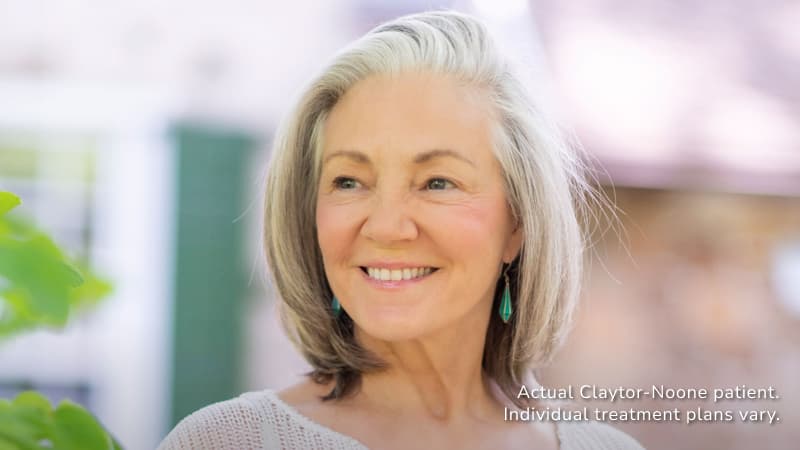Drooping Eyelids (Eyelid Ptosis)
Do your eyelids look “heavy,” making you appear tired, aged, or simply less alert? Sagging or drooping eyelids can affect your confidence, as well as interfere with your vision. If you have droopy eyelids, medically referred to as “eyelid ptosis,” you are not alone: this is a common condition that can affect both the upper and lower eyelids.
Board-certified plastic surgeon Dr. Brannon Claytor works with patients who have eyelid ptosis to develop a safe, effective treatment plan to alleviate symptoms and restore a naturally youthful and energetic appearance to the eyes.
Below, we discuss this condition’s causes and potential treatments.
Causes of eyelid ptosis
Eyelid ptosis can manifest due to a variety of causes, often relating to the gradual weakening of the levator muscle—the key muscle responsible for lifting the eyelid. This muscle may weaken because of the natural aging process, nerve issues, or trauma to the area.
Further, the natural aging process results in loss of collagen and elastin in the skin, which are the proteins that keep skin firm and allow it to “bounce back” when stretched. Since the skin on the eyelids is very thin, eyelid ptosis and puffy eyes are common premature signs of aging.
In many cases, children are born with ptotic eyelids, a condition known as congenital ptosis. Your ophthalmologist or plastic surgeon should be able to identify the cause of your droopy eyelid(s), as it can influence the best treatment options for you.
Dr. R. Brannon Claytor
Dr. Claytor is board certified by the American Board of Plastic Surgery and holds over 20 years of experience as a cosmetic plastic surgeon. An innovator and teacher in the field of plastic surgery, he uses advanced techniques like the drain-free tummy tuck and deep plane facelift to streamline recovery and provide natural-looking, durable results.
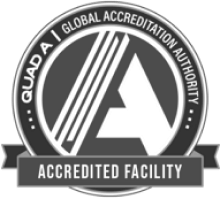
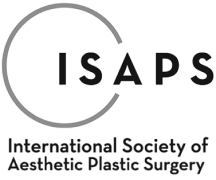
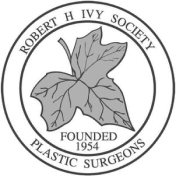

Related concerns to sagging eyelids
While heavy eyelids may seem to be a solely cosmetic concern, it can have more serious implications. For instance, bilateral ptosis—where both upper eyelids droop—can cause significant vision impairment, eye fatigue, or eye strain.
Other concerns that patients have in the eye area include dark circles, crow’s feet, and other wrinkles. While hooded eyelids are typically treated with surgery, these other concerns are often treated with non-surgical injectable filler, Botox, or minimally invasive facial fat grafting.
Plastic surgery for heavy eyelids
When sagging is severe, surgical options are typically the best choice (non-surgical treatments are likely not sufficient). Cosmetic surgery, including blepharoplasty and brow lifts, can offer durable and lasting solutions to droopy eyelids, improving both your appearance and vision.
Eyelid lift (Blepharoplasty or ptosis surgery)
Blepharoplasty, often referred to as an eyelid lift or eye lift, is the most common surgery for correcting droopy eyelids. During ptosis surgery, Dr. Claytor precisely tightens lax muscles and removes excess skin and/or fat from the eyelids to create a smooth lid and a more alert appearance.
Upper eyelid lift
“Blepharoptosis” is the condition of drooping or hooded eyes, a very common sign of aging that is targeted with an upper eyelid lift specifically. During upper blepharoplasty, Dr. Claytor carefully removes the excess eyelid skin and fat and tightens muscles as needed, reducing heaviness and revealing a more open, youthful eye appearance.
Lower eye lift
Lower eyelid lift surgery, on the other hand, addresses puffy under-eye bags and wrinkles, giving a refreshed, rejuvenated look. Lower blepharoplasty is also an option for those struggling with lower eyelid ptosis.
Upper Eyelid Lift
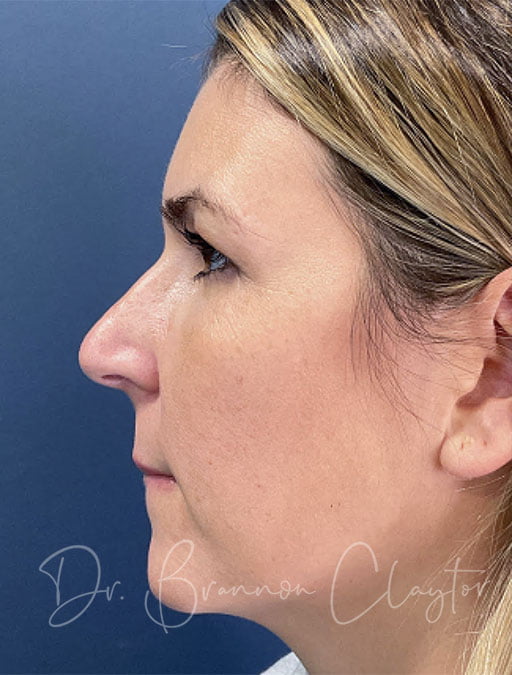
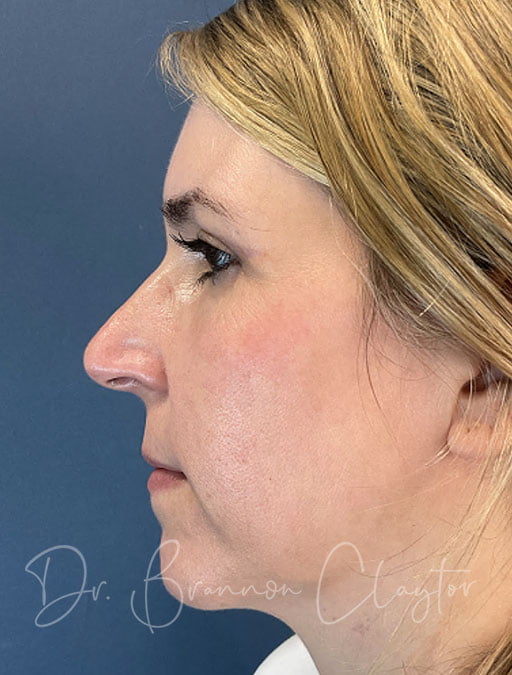
*Individual results may vary.
Brow lift
A brow lift is another surgical option, particularly effective when droopy eyelids are caused or exacerbated by a descending brow line. By lifting and repositioning an overhanging brow, the procedure reduces the amount of skin hanging over the eyes, enhancing the overall aesthetic of the eye area and achieving a more youthful brow position.
Non-surgical treatments for drooping eyelids
While blepharoplasty surgery provides the most lasting solution, certain patients may prefer to first try non-surgical treatment, depending on the cause and severity of your eyelid ptosis. For very mild cases, the use of Botox-type injectables, such as Dysport or Daxxify, can provide temporary relief by subtly raising the eyebrows and, in turn, the eyelids. For patients with low-lying eyelids, daily eyedrops (i.e. Upneeq®) may be a temporary solution.
If your drooping eyelids are accompanied by dry eyes, artificial tears or other specialized eye drops may be recommended by your optometrist or ophthalmologist to provide relief. Some find temporary relief with home remedies like warm compresses, which can soothe irritated or swollen eyelids.
Combined procedures: Facelift and laser skin resurfacing
For a more comprehensive rejuvenation, eyelid surgery is often combined with another anti-aging procedure such as a deep plane facelift (Dr. Claytor’s preferred facelift technique) or laser skin resurfacing. A face and neck lift can address sagging in the lower face and neck, while laser skin resurfacing improves skin texture and tone, enhancing the overall result of your surgery. The result can be a more cohesive, youthful appearance through the face and neck.
Dr. Claytor is a renowned expert in the deep plane facelift technique for natural-looking rejuvenation that turns back the hands of time; he is also a published plastic surgery expert in the art of using non-surgical rejuvenation to complement surgical results.
Choosing a plastic surgeon for eyelid liftWhether you’re dealing with vision impairments, hoping to improve your appearance, or both, choosing a surgeon who is right for you is crucial for your safety, quality of care, and satisfaction. Look for the following criteria in a plastic surgeon:
- Board certified plastic surgeon
- A commitment to patient education
- Active engagement in research and the plastic surgery community
- Stand-out patient reviews
- Many years of experience performing eyelid lift
Philadelphia board-certified plastic surgeon Dr. Brannon Claytor has extensive experience with eyelid surgeries, including blepharoplasty and brow lifts, and he is committed to providing high-quality, personalized care for his patients. Patients choose Dr. Claytor for his surgical skill, empathetic approach, and proven track record. His attention to detail and dedication to patient satisfaction ensure that you can trust him with your eyes, your window to the world.
Why choose Dr. Claytor for your plastic surgeon?
Double Board-Certified for a high level of safety and precision
Chief of Plastic Surgery at Main Line Health, a top health system
Board Member of The Aesthetic Society, shaping the future of aesthetics
8x Philadelphia Magazine Top Doctor for exceptional patient care
Recognized as one of America’s Best Plastic Surgeons by Newsweek
Drain-free recovery expert for faster, more comfortable healing
Deep plane facelift innovator and global educator
Active researcher in surgical and non-surgical aesthetic advancements
Highly regarded for his surgical expertise and outcomes, as well as his dedicated follow-up care





Schedule a consultation with Dr. Claytor today by calling (610) 527-4833 or contacting us online to learn more about your condition, explore your treatment options, and discover how you can regain confidence, vision, and a rejuvenated appearance. Located in Bryn Mawr, we serve patients throughout the greater Main Line and Philadelphia areas.

Medically reviewed by Dr. R. Brannon Claytor — Updated on Oct 24, 2024

